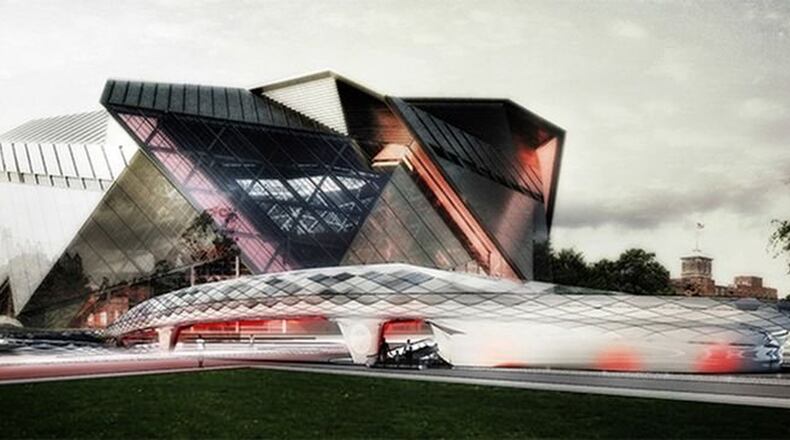Atlanta City Council members narrowly approved $10 million in additional funding last week for a pedestrian bridge over Northside Drive, after being told if they didn’t vote in favor of spending the money they would likely be left with an ugly bridge and be hit with a lawsuit from the contractor.
The bridge, with a swirling design that includes $6 million in decorative lighting and metal cladding, will connect a MARTA station to the $1.5 billion Mercedes Benz Stadium.
Many council members thought the bridge would cost no more than $12.8 million when they voted in favor of that funding in 2016, largely because Mayor Kasim Reed’s administration told them the bridge could be built for that amount.
But just five weeks after council approved the funding, The Atlanta Journal-Constitution obtained the 500-page project budget that showed the bridge costing $23.2 million -- an 81-percent increase.
The AJC's story, published Dec. 22, 2016, not only revealed the bridge's actual cost for the first time, but it also challenged the administration's contention that the bridge was requested by residents of Vine City and other west side neighborhoods.
The Reed administration also told the council and the public that the bridge was not being built as an amenity for the Falcons’ new stadium.
None of those statements were backed up by the record, which included documents related to the project and interviews with key west side residents who were part of the negotiations for neighborhood improvements as part of the stadium deal.
As the AJC was reporting the bridge story, former Public Works Commissioner Richard Mendoza and Deputy Chief of Staff Katrina Taylor Parks both said a fully functional bridge could be built for $12.8 million and that any additional funding would have to be approved by the council.
“This document does not place the city on the hook for that full $23 million,” Mendoza told the AJC when questioned about the difference between the budget and the amount of funding approved by the council. “And if the council disapproves, we’re not obligated to pay that additional amount.”
On March 5, the council was told the funding wasn’t discretionary.
Taylor Parks, who still serves as Deputy Chief of Staff to newly elected mayor Keisha Lance Bottoms, told the council that the budget had always been $23.2 million. And current Public Works Commissioner William Johnson said the city has already been sent invoices by the construction company totaling nearly $15 million.
“At this point, not funding (the additional amount for) the bridge means it won’t be completed,” Johnson said. “I don’t foresee us being able to build this bridge for half the money.
“That’s not going to happen.”
Johnson also said the contractor has already purchased some of the distinctive metal cladding, and the city would likely face a lawsuit if it refused to pay for it now.
Newly elected councilwoman Jennifer Ide said she reviewed all the documentation and watched video of meetings at which the bridge was discussed. She could not find evidence of the administration saying the bridge might cost double the $12.8 million initially approved.
“How was the public supposed to know what the bridge was going to cost?” Ide asked. “I think the council didn’t even understand that. I don’t want to ever see this happen again.”
The additional bridge funding was ultimately approved by an 8-7 vote.
Completing the project is considered an emergency now because the city will host the Super Bowl in February 2019. Construction is expected to continue through November.
“This is what it is,” councilman Andre Dickens said. “The bridge is for major functions, not just to help people (from west side neighborhoods) cross Northside Drive.”
Indeed, as the AJC previously reported, a project description in the city’s solicitation of bids says the bridge’s purpose is to “provide pedestrians safe and unimpeded access to the Mercedes-Benz Stadium.” It doesn’t mention connecting the neighborhoods to downtown.
And a November 2015 study of the bridge, titled “A Path to Connectivity,” discusses the project in terms of the impact it will have on fans going to the stadium.
“Cylindrical in section, the form gives the visitor the feeling of passing through the tunnel onto the field,” the report says. “The result is a grand introduction to the event space, a strong sense of arrival that the stadium commands.”
About the Author
The Latest
Featured



